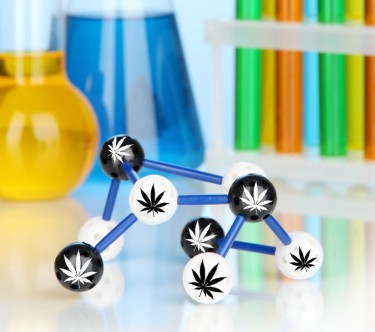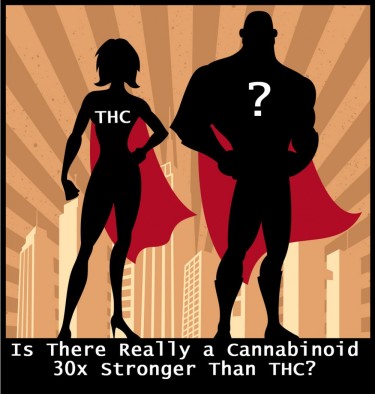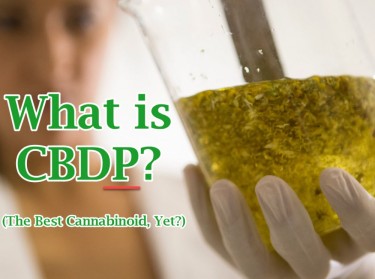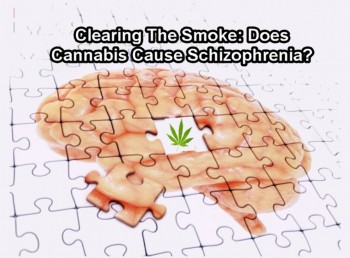
Dr. Raphael Mechoulam is one of the world’s most famous doctors, especially in the world of cannabis medicine.
He has been given the nickname “Father of THC” and the “Father of cannabis research” because he is renowned for discovering tetrahydrocannabinol, and isolating it. Because of his breakthrough discoveries, he has helped jumpstart the medical cannabis revolution while helping thousands of people around the world. Over the last few years, he has had significant achievements though one of the latest occurred just last year.
Dr. Mechoulam’s latest discovery is called EPM301, or cannabidiolic acid methyl ester, also known as a synthetic version of the CBDa cannabinoid that is more stable. EPM stands for Endless Potential Molecules, and there are now around 14 patented molecules that are being tested on humans with the US FDAs guidance.
The first targets of EPM are psoriasis and inflammatory bowel disease (IBD), which are notoriously difficult to treat.
What Is EPM301?
THC, CBD, and other cannabinoids are considered secondary compounds in the cannabis plant because they are only produced after the primary acids have been decarboxylated. On the other hand, EPM301 can easily be reproduced and has significant potential in treating numerous inflammatory conditions.
Dr. Mechoulam unveiled it in 2019, but back then it could not be used in a pharmaceutical setting because it was naturally unstable which is why he worked with EPM to find a way to make it more stable.
Swisa told Israel21c.org that the cannabinoids found in cannabis products these days can only be found in the dried cannabis flowers, while the live plant is where you can find the acids which are precursors for these cannabinoids. Cannabinoid acids themselves are more powerful and just as promising as conventional medicine, though when they are exposed to heat they break down easily because they are so unstable.
“EPM asked, is it possible to create cannabinoid acids in the lab in the way that is stable and suitable for prescription medicine development? That’s the core difference between EPM versus what’s happening in the market today,” Swisa said.
“It’s much smarter to use synthetic molecules because they are highly reproducible and because producing small molecules would be cheaper than creating plants. You can achieve scalability, reproducibility and robustness,” explained Prof. Dan Peer, a director of the Laboratory of Precision Nano Medicine in the Tel Aviv University, who is also part of the scientific advisory board of the EPM.
Peer disclosed excellent results of a study on EPM301 for treating IBD during the International Cannabis Conference which was hosted in Israel virtually in June 2021. “My lab has been studying novel approaches to treat inflammatory bowel diseases such as Crohn’s and ulcerative colitis,” he told Israel21c. “I’m a very skeptical guy. Usually, molecules don’t work at the animal level let alone the clinical level,” he said.
“But when I was approached four years ago by Raphael Mechoulam to check some molecules he synthesized, we discovered that one of them – EPM301- has unique super anti-inflammatory properties,” Peer said. “It looks very safe in animal models and is much better than the steroids that are the gold standard treatment for flare-ups. This might change the landscape for anti-inflammatory drugs.”
Forbes shares more about the accomplishments of Dr. Mechoulam and EPM CEO Reshef Swisa.
“EPM developed a method to work with the original substances of cannabis,” says Dr. Mechoulam. “So, while everybody is discussing THC and CBD, these cannabinoids are actually a secondary substance; they only appear later in the plant.”
“Originally, there is an acid that appears in the plant, and those acids are the mysterious worlds of compounds that are much more potent than cannabinoids,” he says. What makes the discovery of Dr. Mechoulam significant is that while cannabidiolic acids were known before, it could not be used by pharmaceutical industries. Now, they found a way to modify the acids that would stabilize them enough to be used for pharmaceutical purposes.
“We took a cannabidiolic acid and we stabilized it by a simple chemical procedure, called esterification; then the compound is stable,” said Swisa.
“We badly need new drugs in several diseases and some of the drugs that are available, may be pretty good but they ultimately cause side effects,” said the Dr. “We have two groups of compounds today that need to have a replacement: these are steroids and opioids. We believe that cannabis carries the ability to introduce replacements to these families.”
Since EPM is patented, it proves that cannabinoids can be used as an effective substitute to opioids and steroids especially when patients need to kick the addiction to prescription drugs. “We compare our compound not only to cannabinoids, but to the existing drugs that are applied today,” said the Dr. “So, for example, in IBD we compared our compounds to two conventional products: one is the prednisone (the steroids) and one is a biological drug. And in both of them, we managed to prove that the activity of our compound is very similar to the common one.”
“I sincerely hope that one day we will have, within the next few years, a cannabidiolic acid derivative on the market in parallel to CBD itself.” He also stressed the importance of regulation and classification when it comes to drugs so that we could reduce the risk of side effects. “Companies should be careful when they’re taking compounds and claiming therapeutics. They need to do it in accordance with the regulation in order to create consistency in the language… because people confuse recreational use with the medicinal use and aren’t necessarily looking to a specific indication, with specific dosing,” he said.
NEW CANNABINOID RESEARCH, READ THESE..
A CLOSER LOOK AT THE SYNTHETIC CANNABINOID EPM301
OR...
IS THE THCP CANNABINOID REALLY 30X STRONGER THAN THC?








